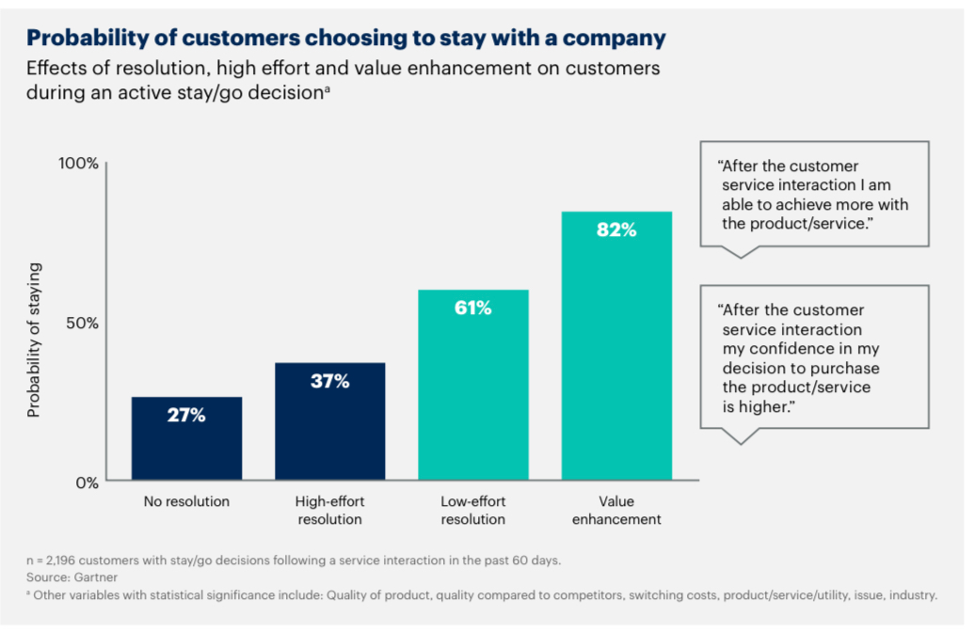The Shift Toward a Self-Service Dominant Customer Service Strategy
The benefits of a digital-first self-serve customer service strategy are obvious to see. From a customer perspective, the most important is fast resolution regardless of the support channel. From the service provider perspective, the most important should be providing those customers with an effortless experience at the lowest possible cost. Customers do not have strong channel preferences and prioritise obtaining a resolution above all else.
Gartner has published some interesting insights based on several surveys. Their findings show that not only can a digital-first self-service strategy be far more cost-effective but by providing an effortless and value-enhancing experience, service providers can significantly increase customer loyalty, increase advocacy and drive higher customer spend.
Value enhancement can be described as a service provider capitalising on service interactions to make an impact on loyalty through not just ensuring resolution of issues, but that the customer leaves an interaction more confident in their purchase decision and better able to maximise the value of their product or service. Take an example of a customer lodging a network service issue via our M-Connect in-app chat tool. Value enhancement would be providing a resolution to their issue but also providing a bonus 100mins of international voice for their next subscription period. All automated via analytics of their usage to define an appealing bonus mechanism, delivered via in-app messaging and activated via real-time service provision.
From a profitability perspective, this is possible because the cost to service that customers is far less over digital channels than live channels. Long term, by providing that customer with a great experience, the service provider has increased loyalty and likely also customer lifetime value.
Gartner found that after this type of value-enhancing service interaction, there was an 82% probability that the customer would stay when presented an opportunity to switch.
Service providers should focus their efforts on resolving customer issues completely via self-service channels with only the most complex cases being directed to live-channels to deliver a high-quality service experience and maintain customer loyalty.
Five value-enhancing activities
Below we discuss five key ways to drive value enhancement during service interactions:
- Validate customer purchase decisions. Reassure the customer that their purchase decision was a smart one. For example, in month 2 or 3 after service activation notify the customer of their actual usage versus plan allowances and reinforce their original plan decision.
- Anticipate customer needs. Predict what features your customer may find valuable in the future based on their current needs. Based on usage profiling, promote up-sell to complementary products such as international voice bundles, roaming products or data packages.
- Help customers achieve a goal. Outline the product features a customer should use based on their goal for partnering with you. For example, informing customers of in-app self-service capabilities such as biometric login, chat, FAQs or issue reporting.
- Educate customers on better uses. Rather than focusing on how customers have been misusing the product, teach them how best to use it. For example, in-app provisioning of products and services or managing bill payments.
- Advise customers on new uses. Introduce the customer to newly introduced or untapped product features. For example, data sharing or referral rewards schemes.

If you would like to learn more about how M-Connect can help to drive customer experience and value enhancement for your customer, please contact us here.





